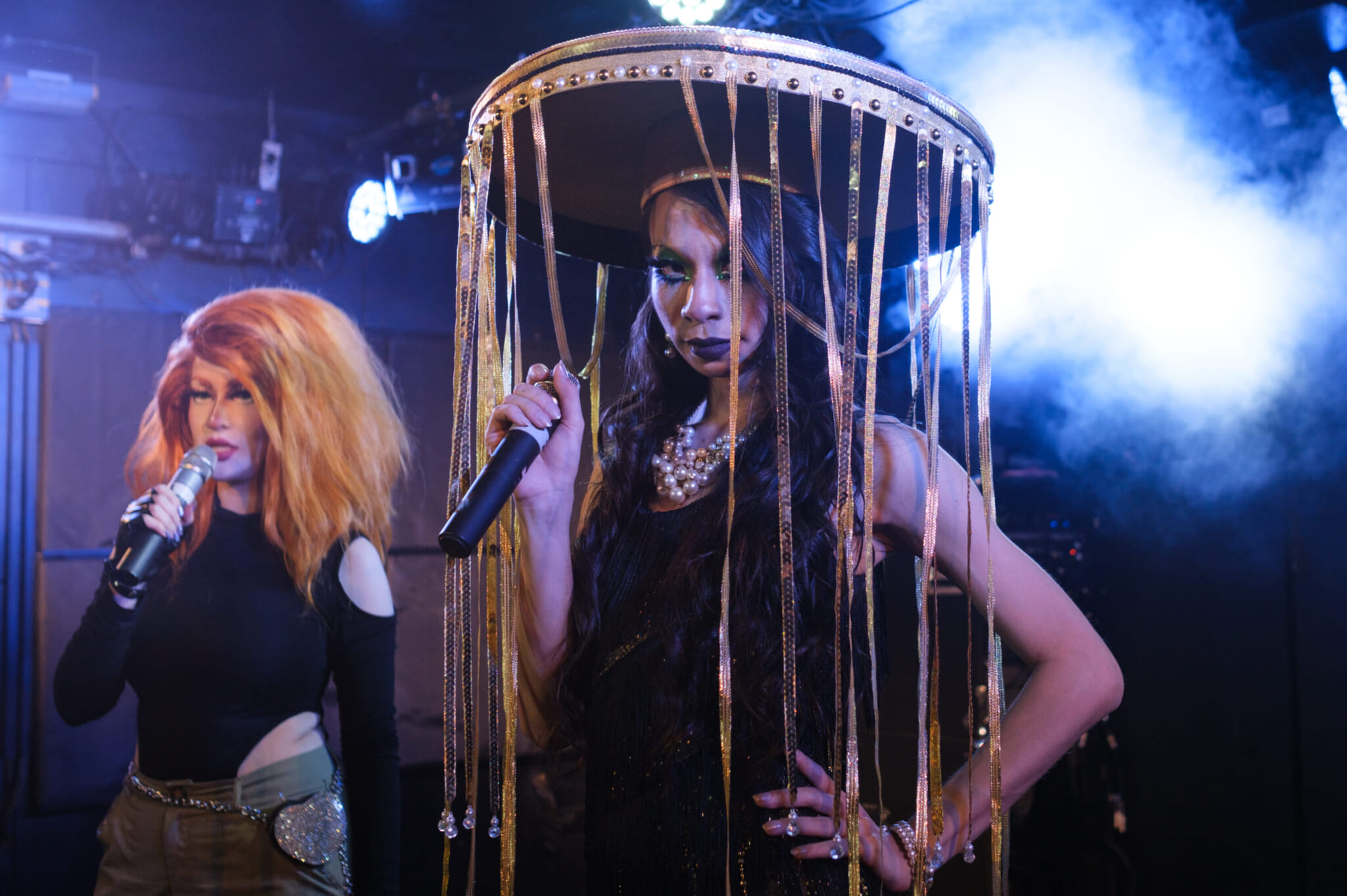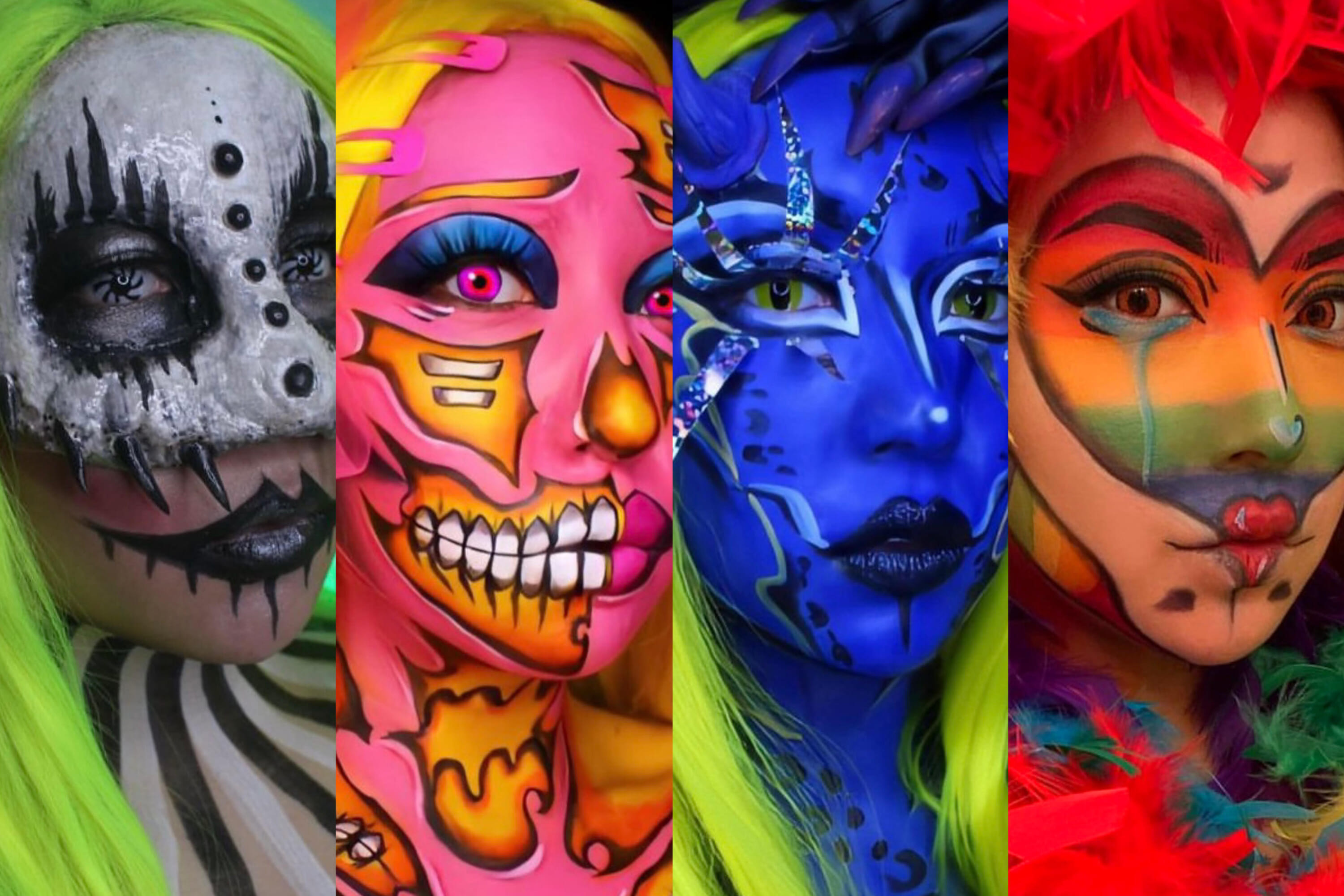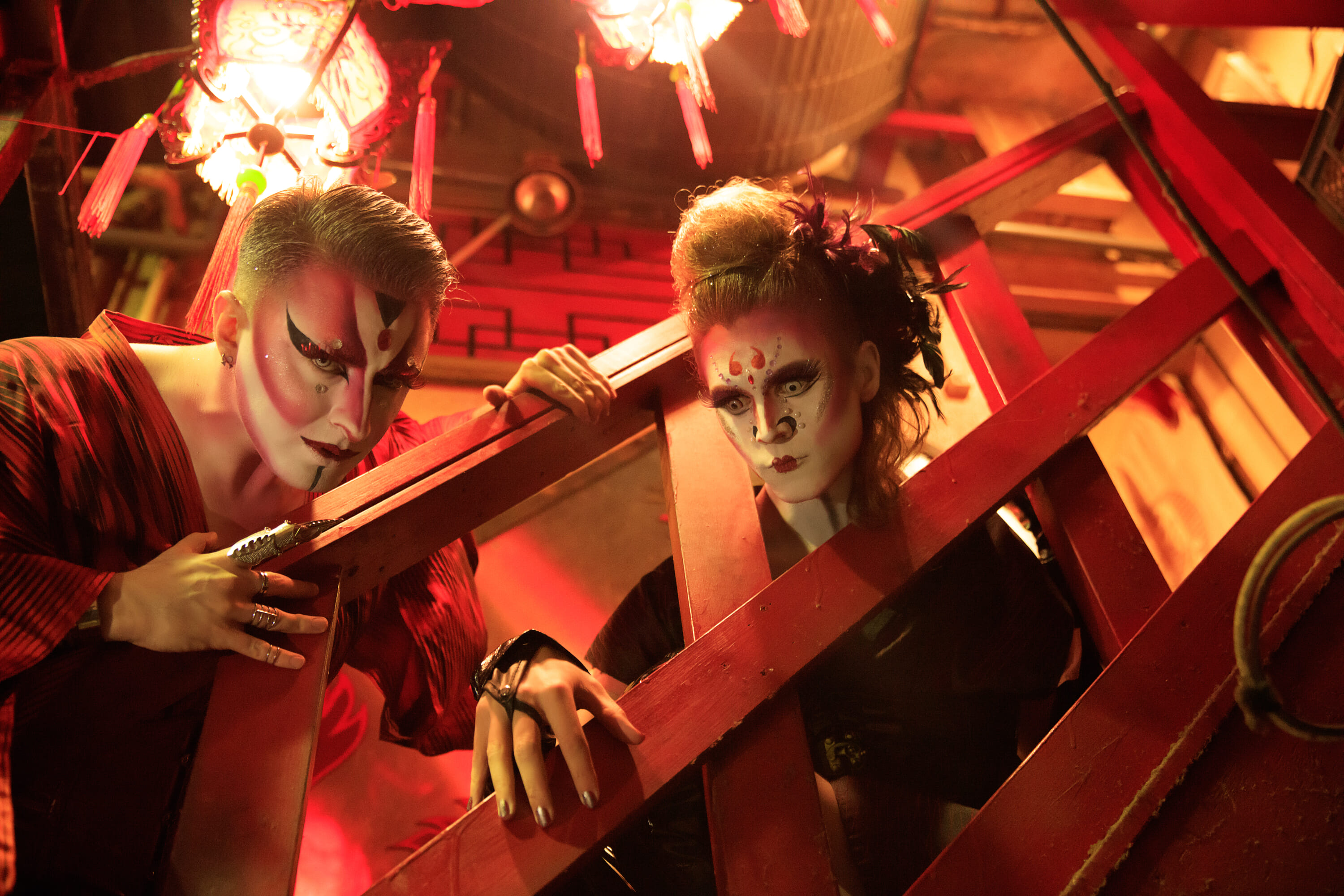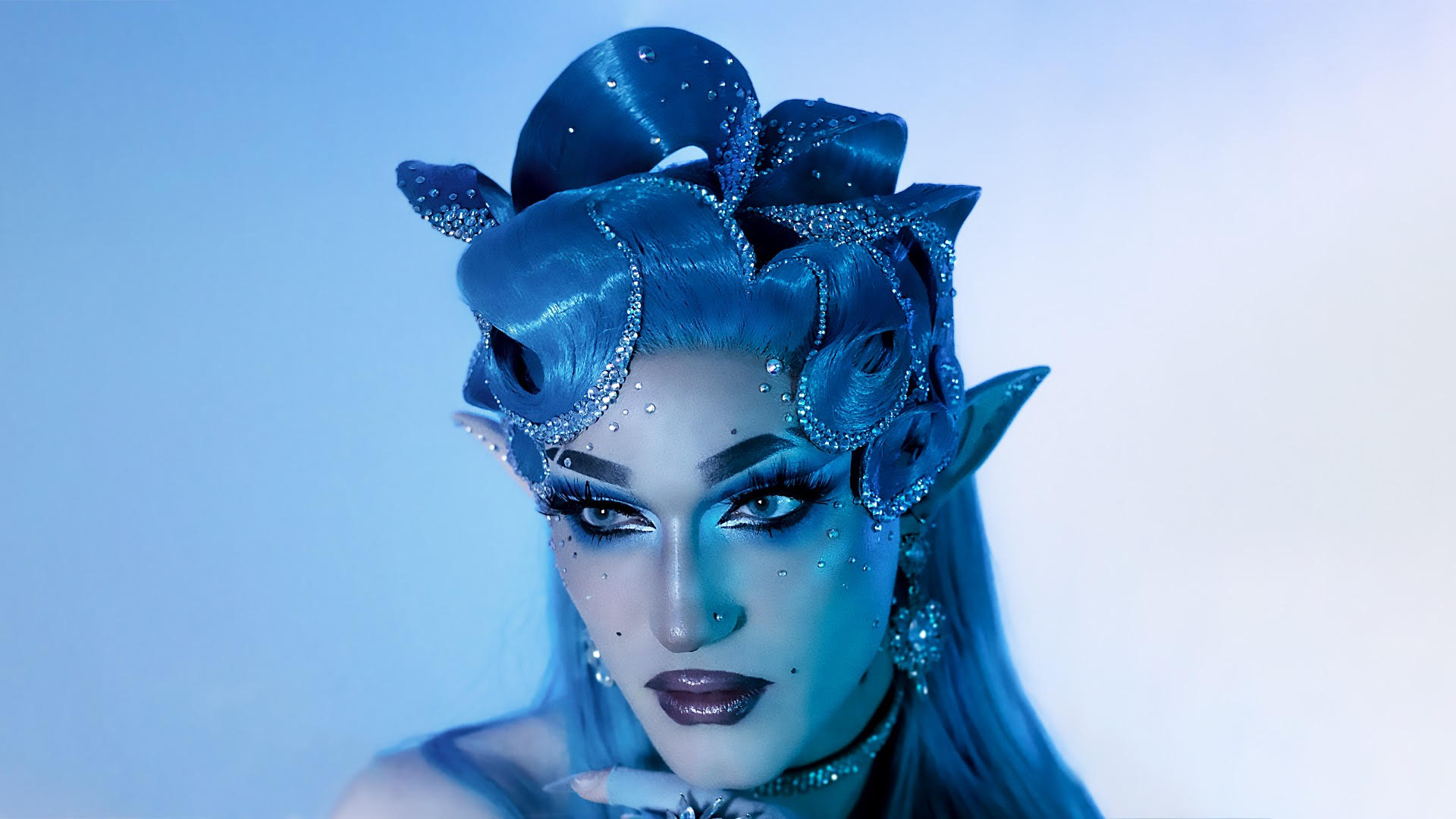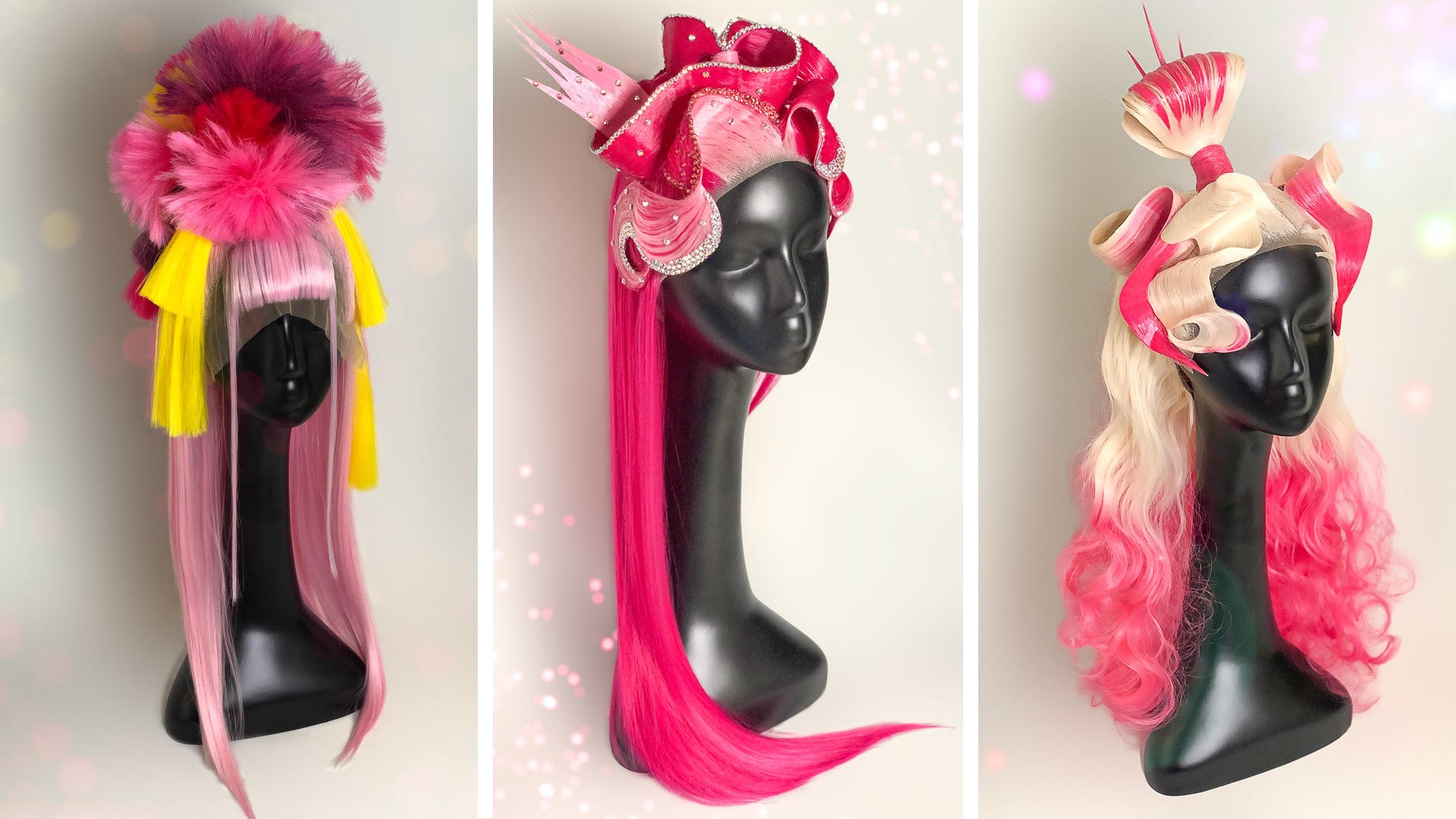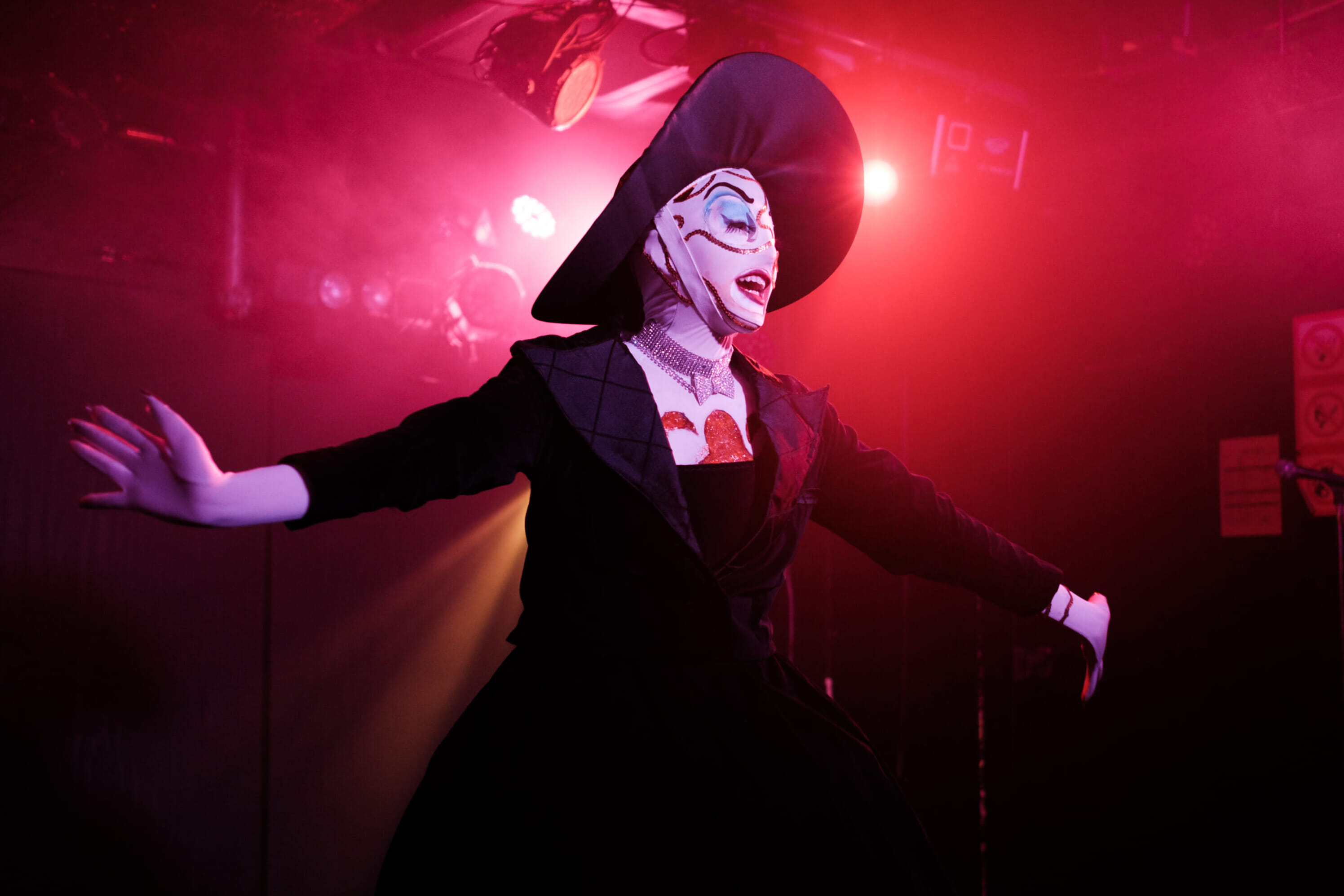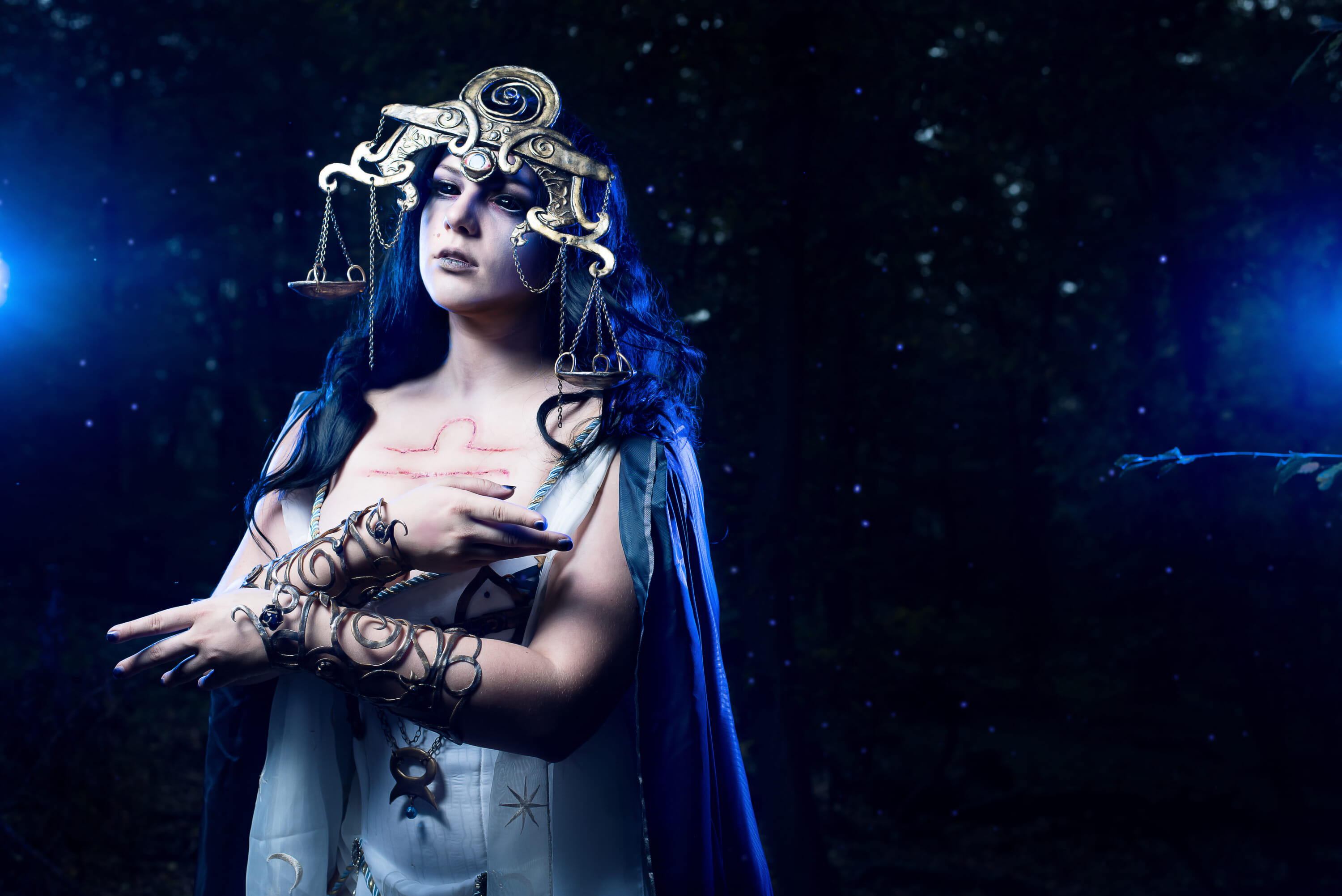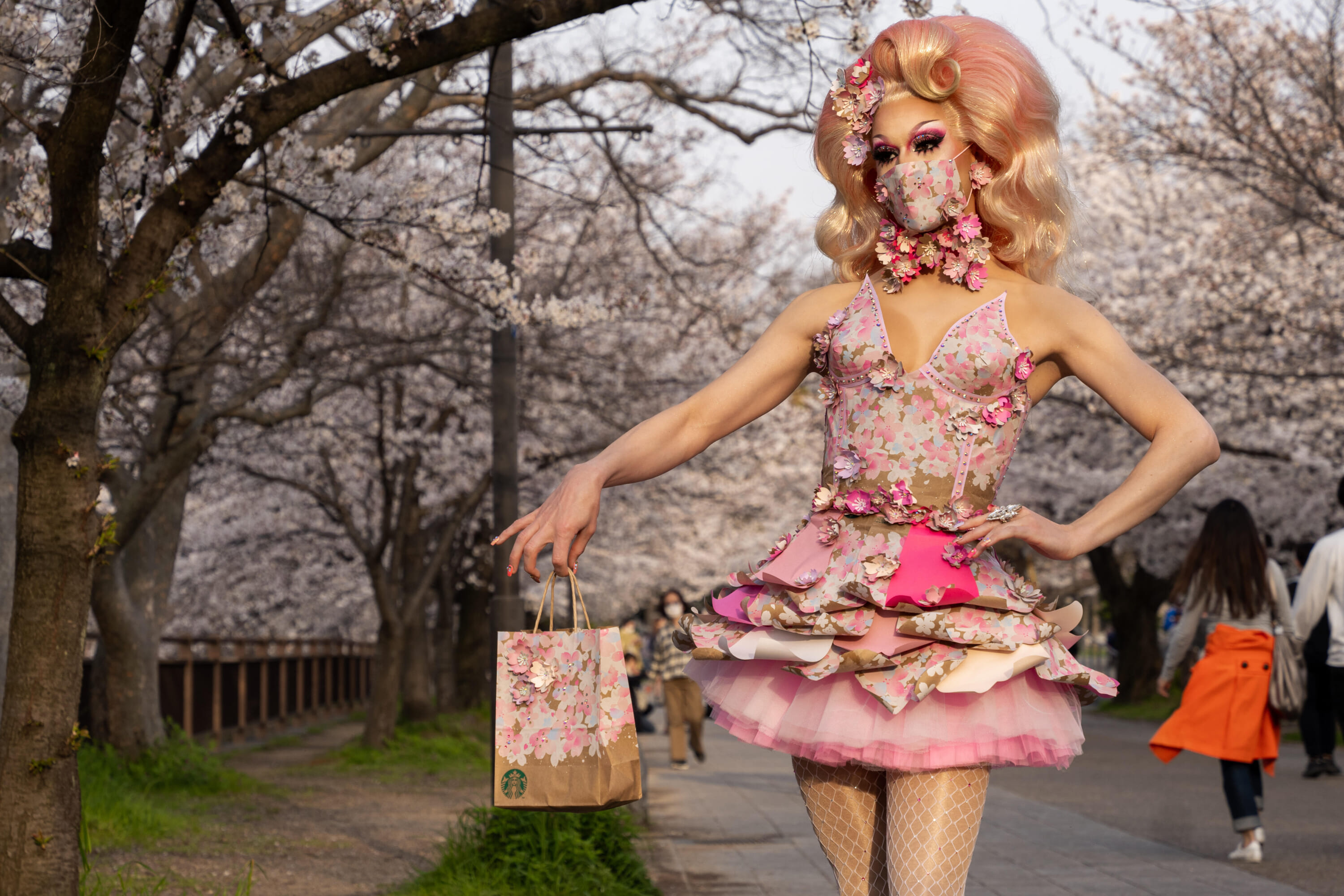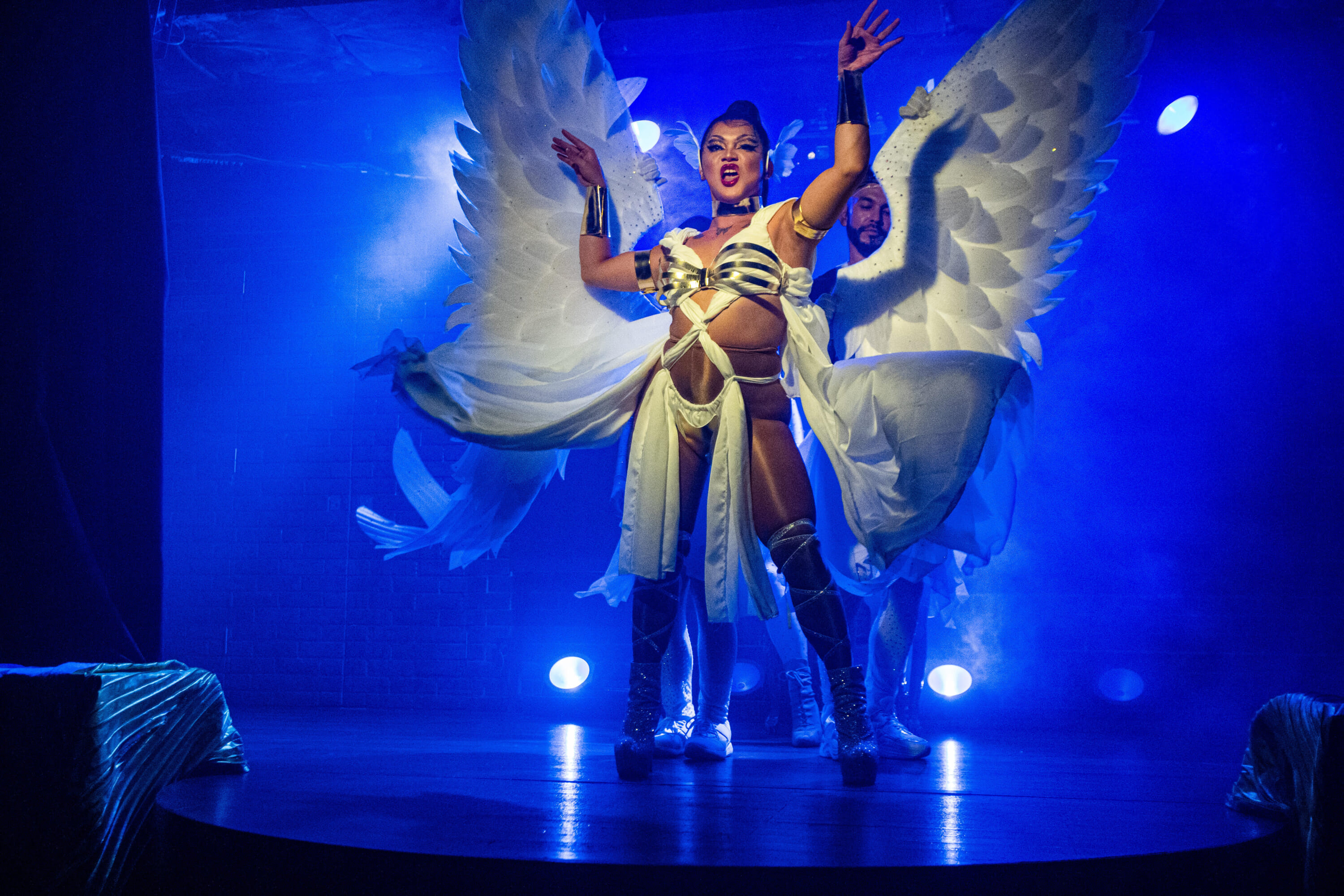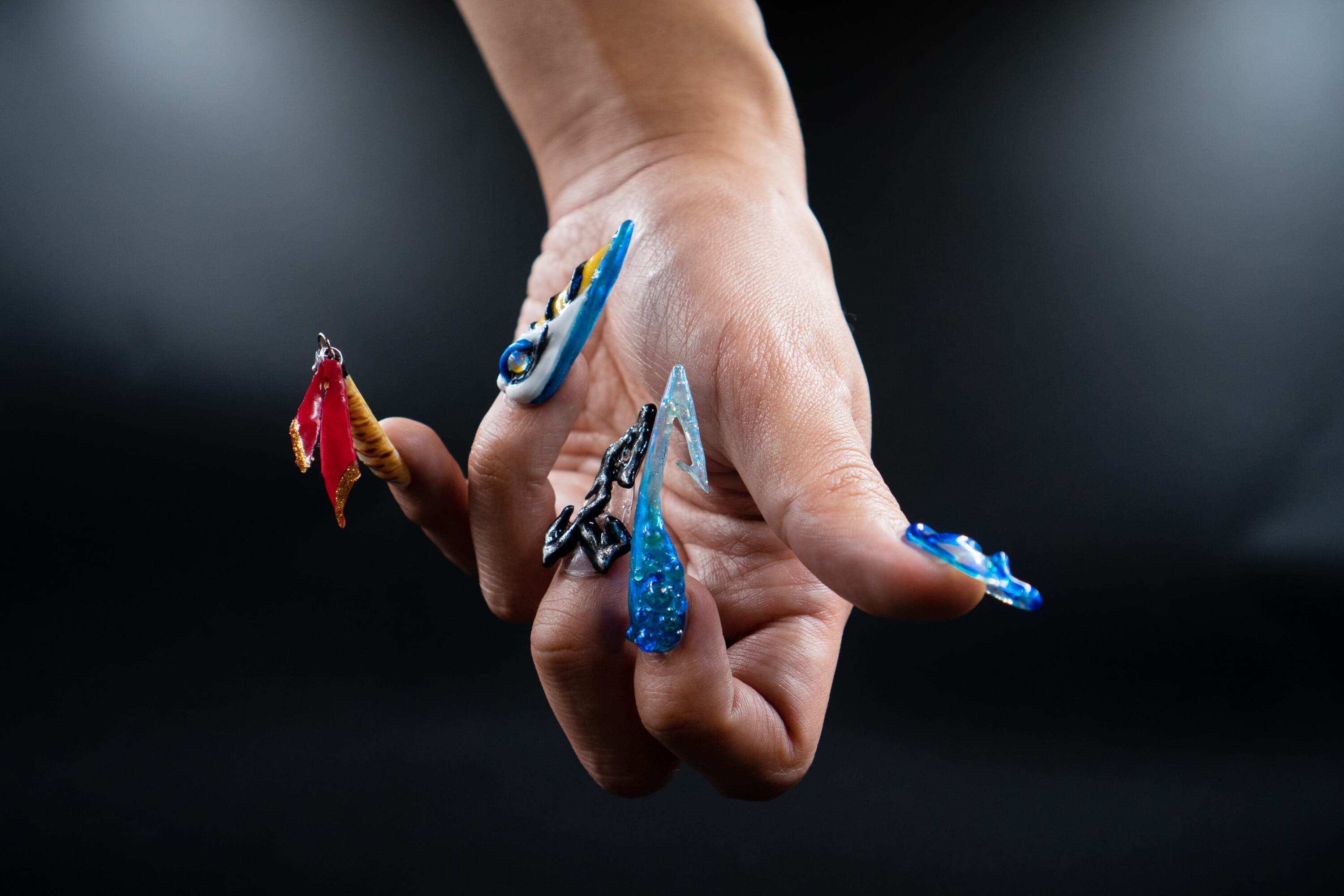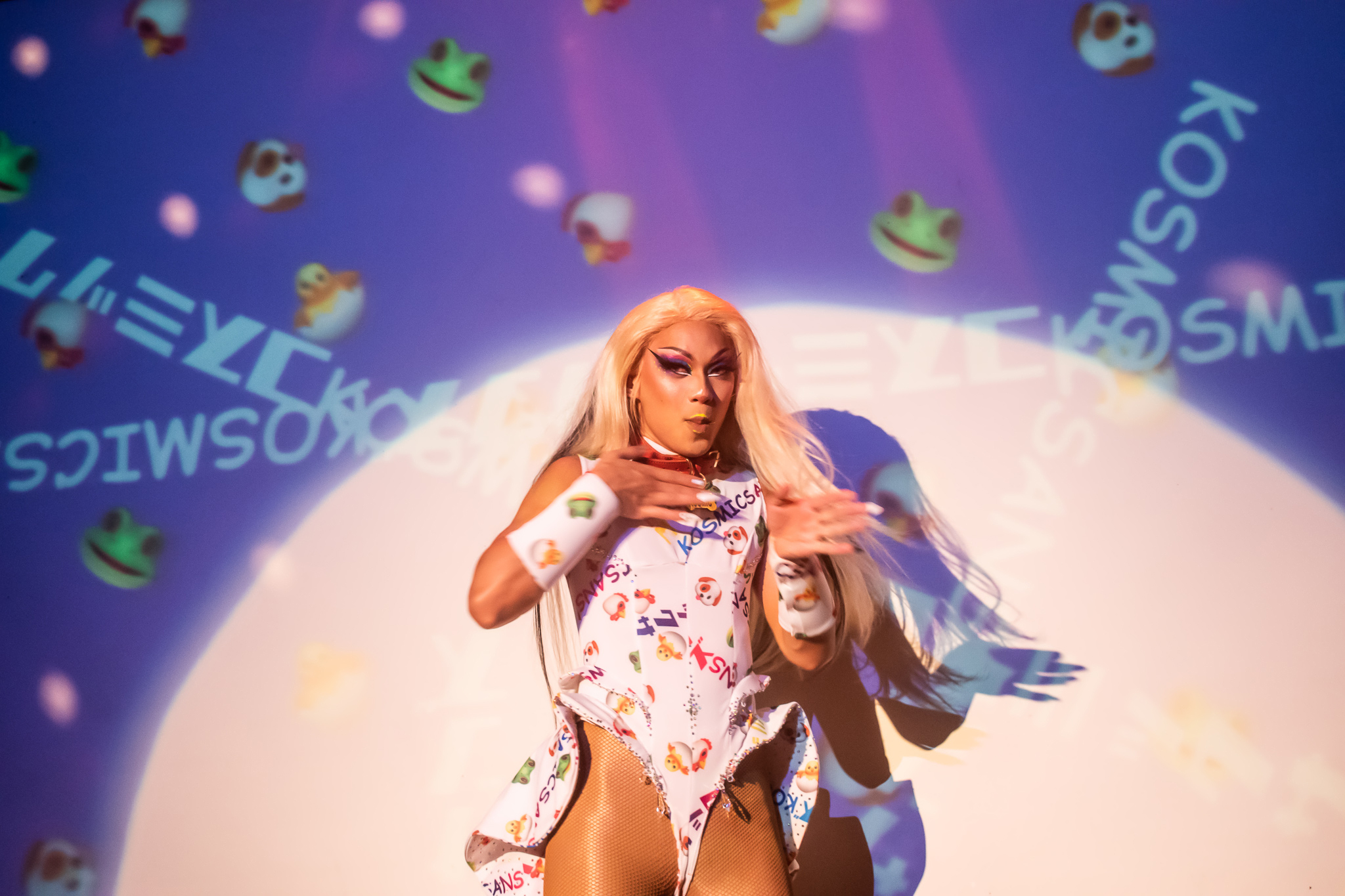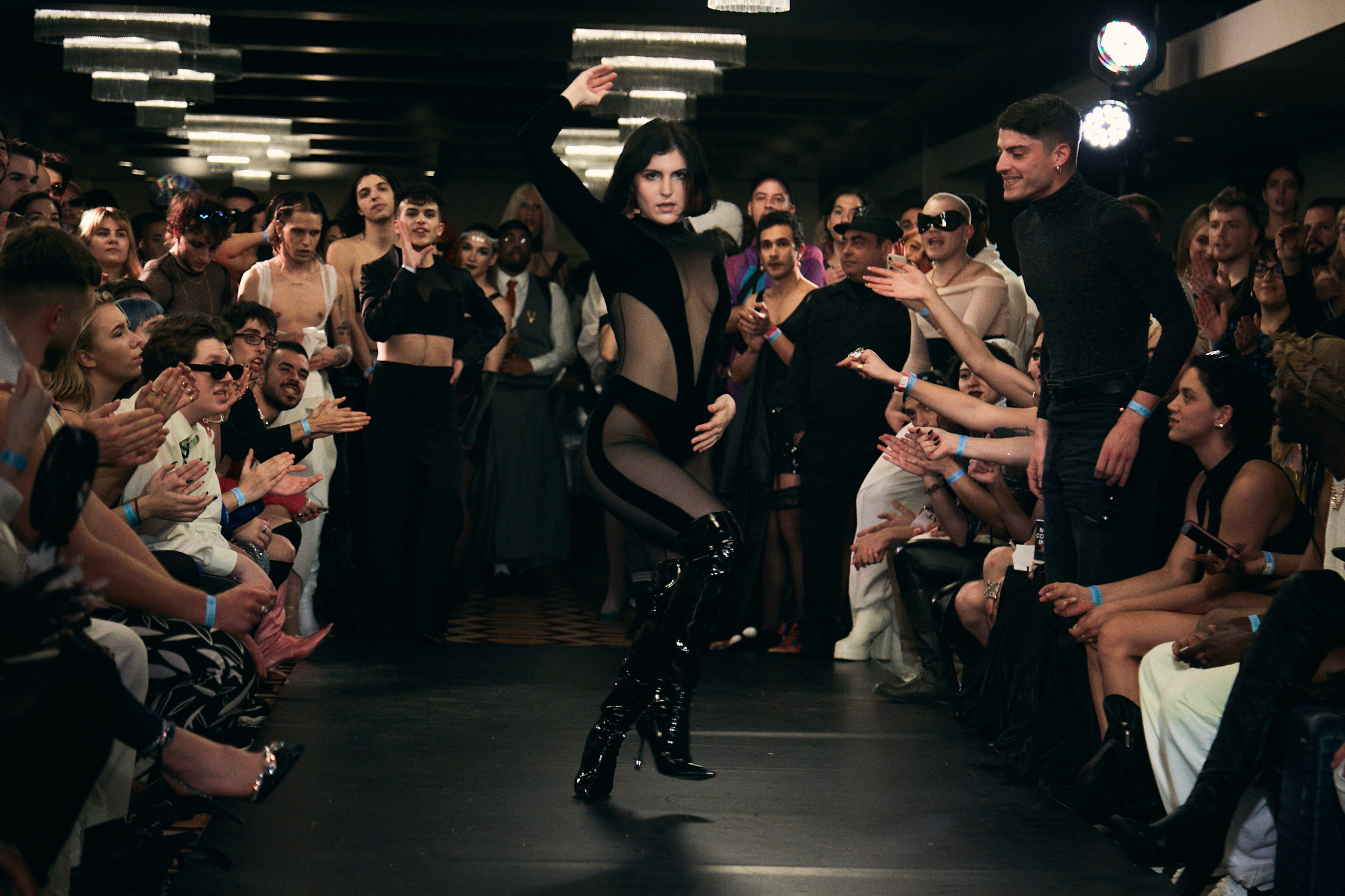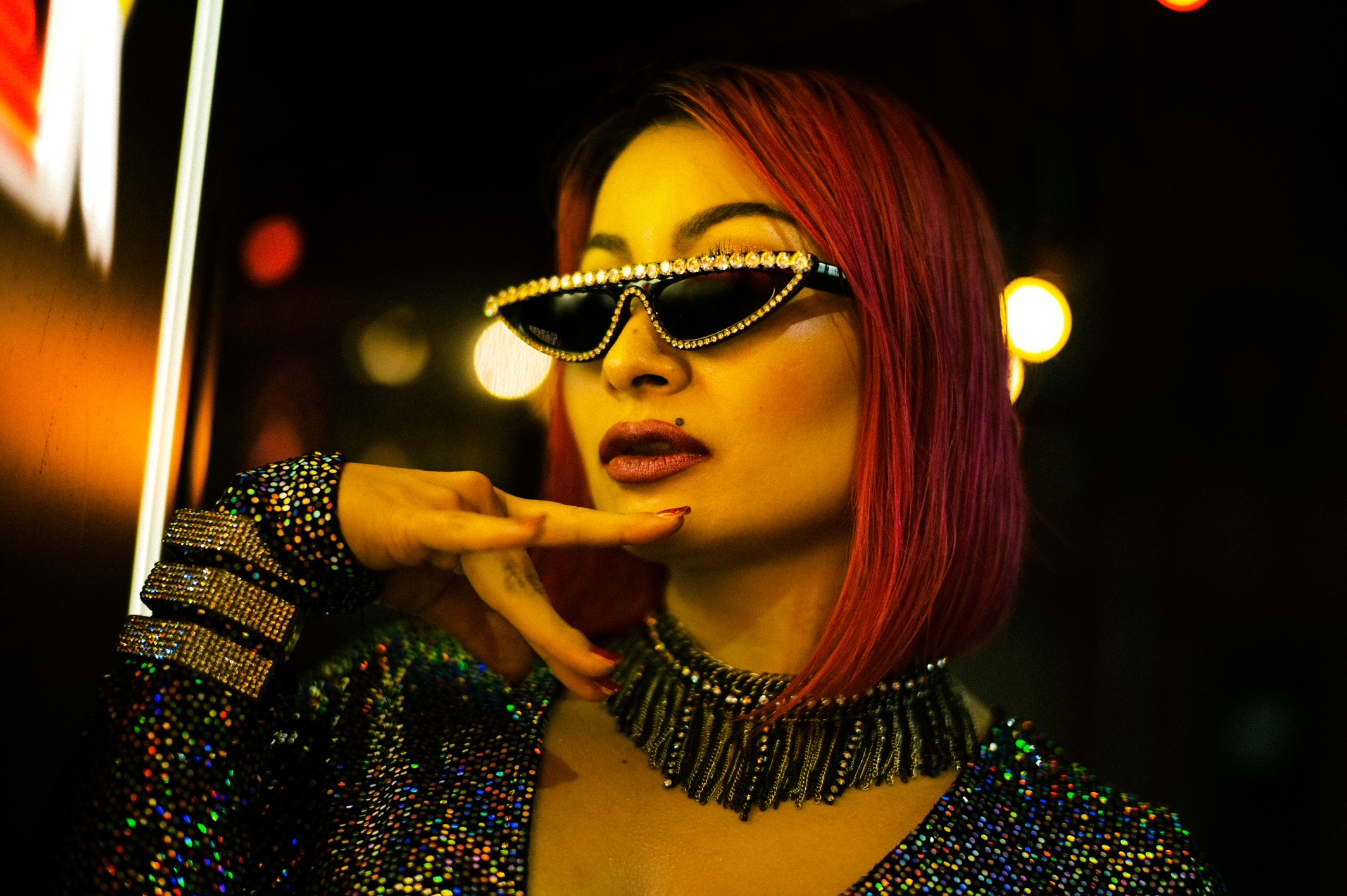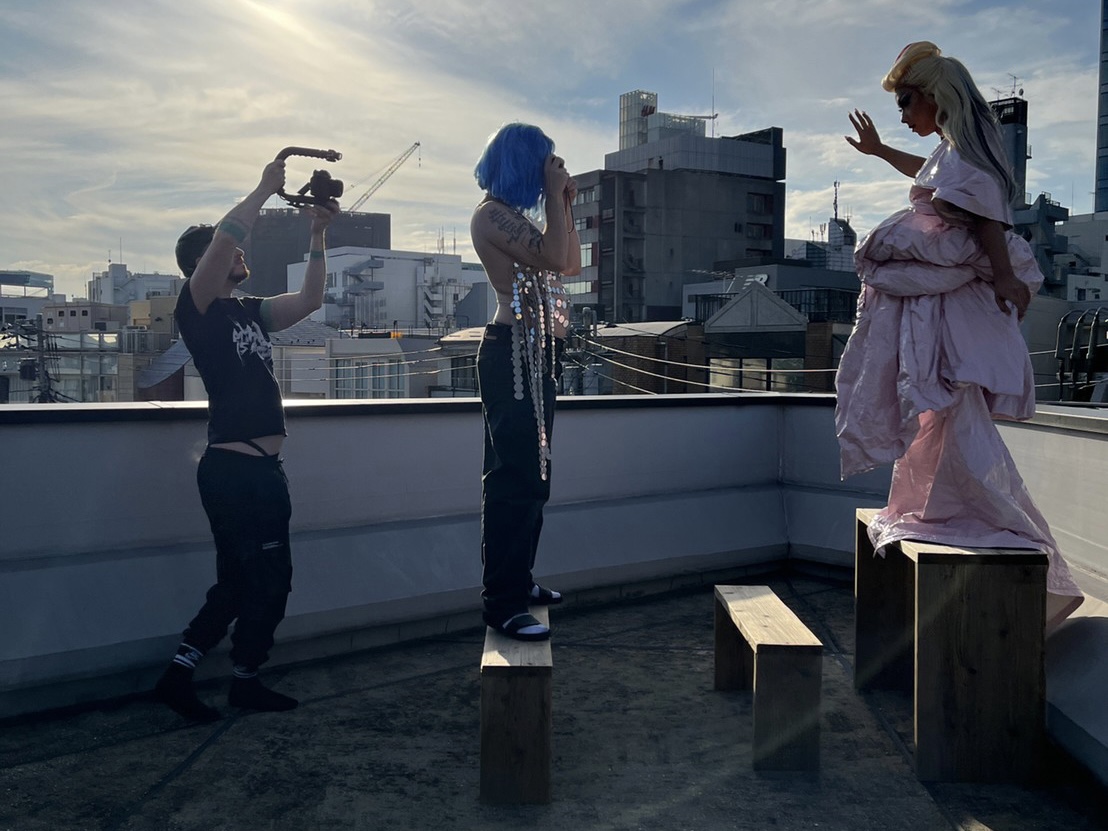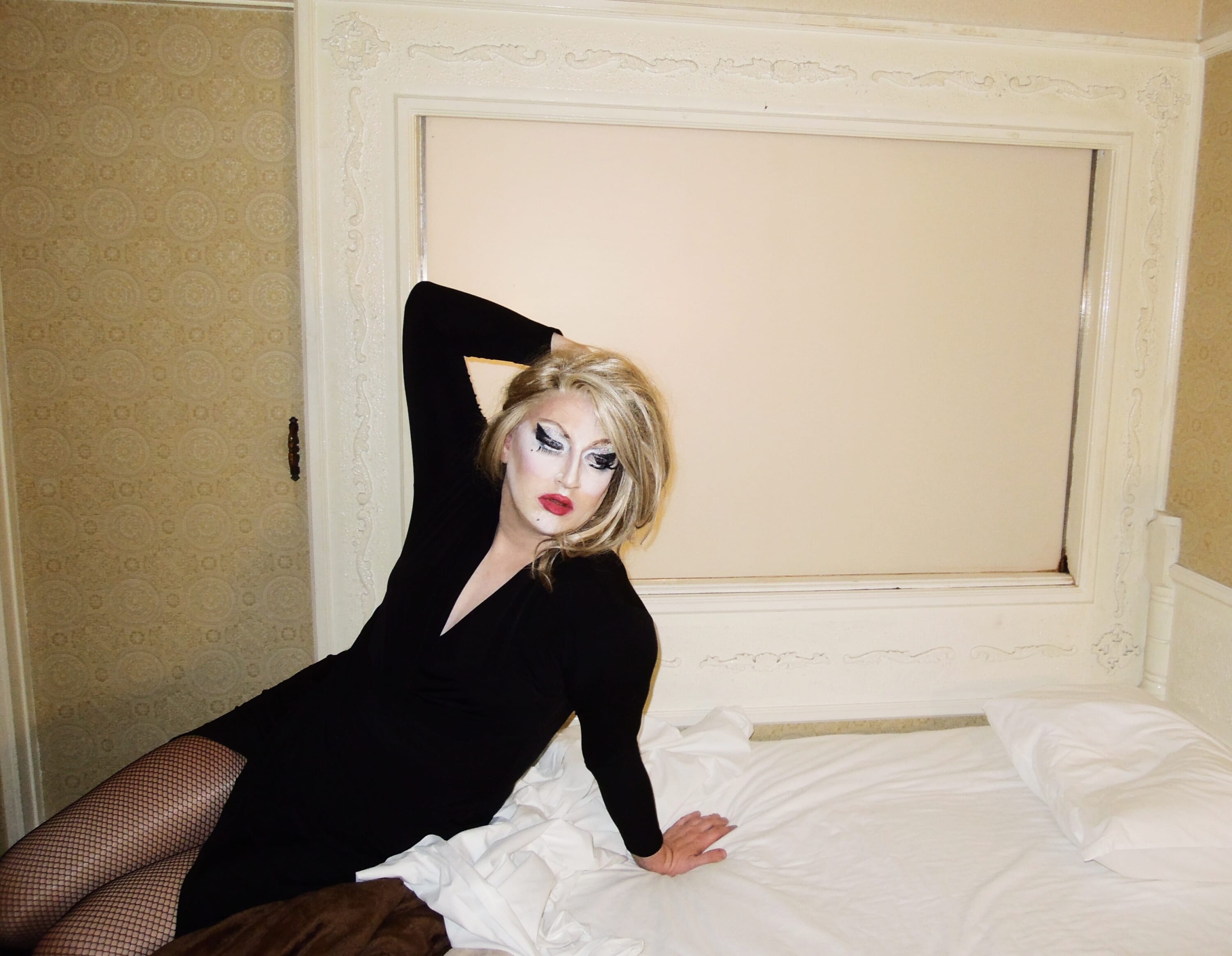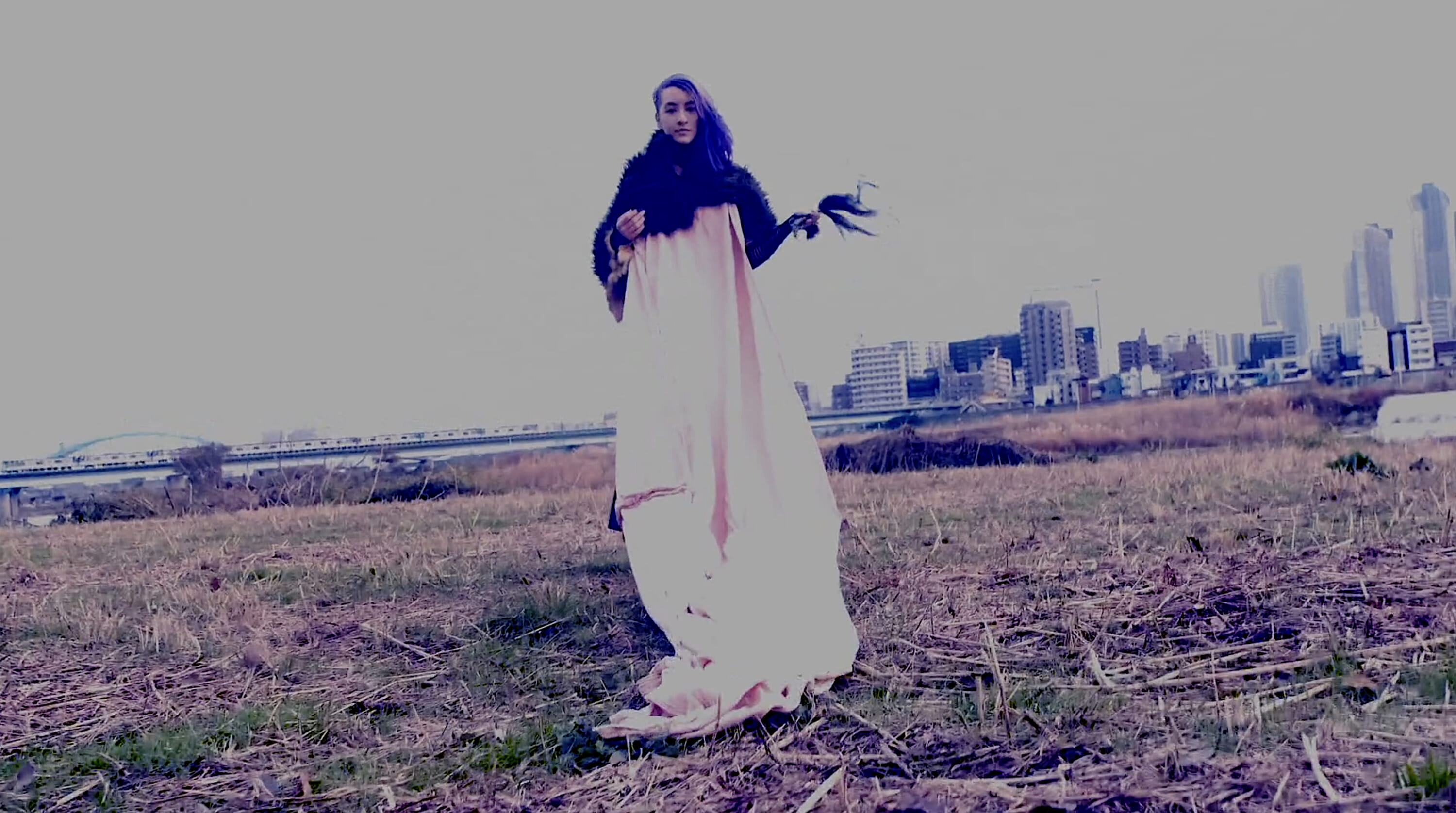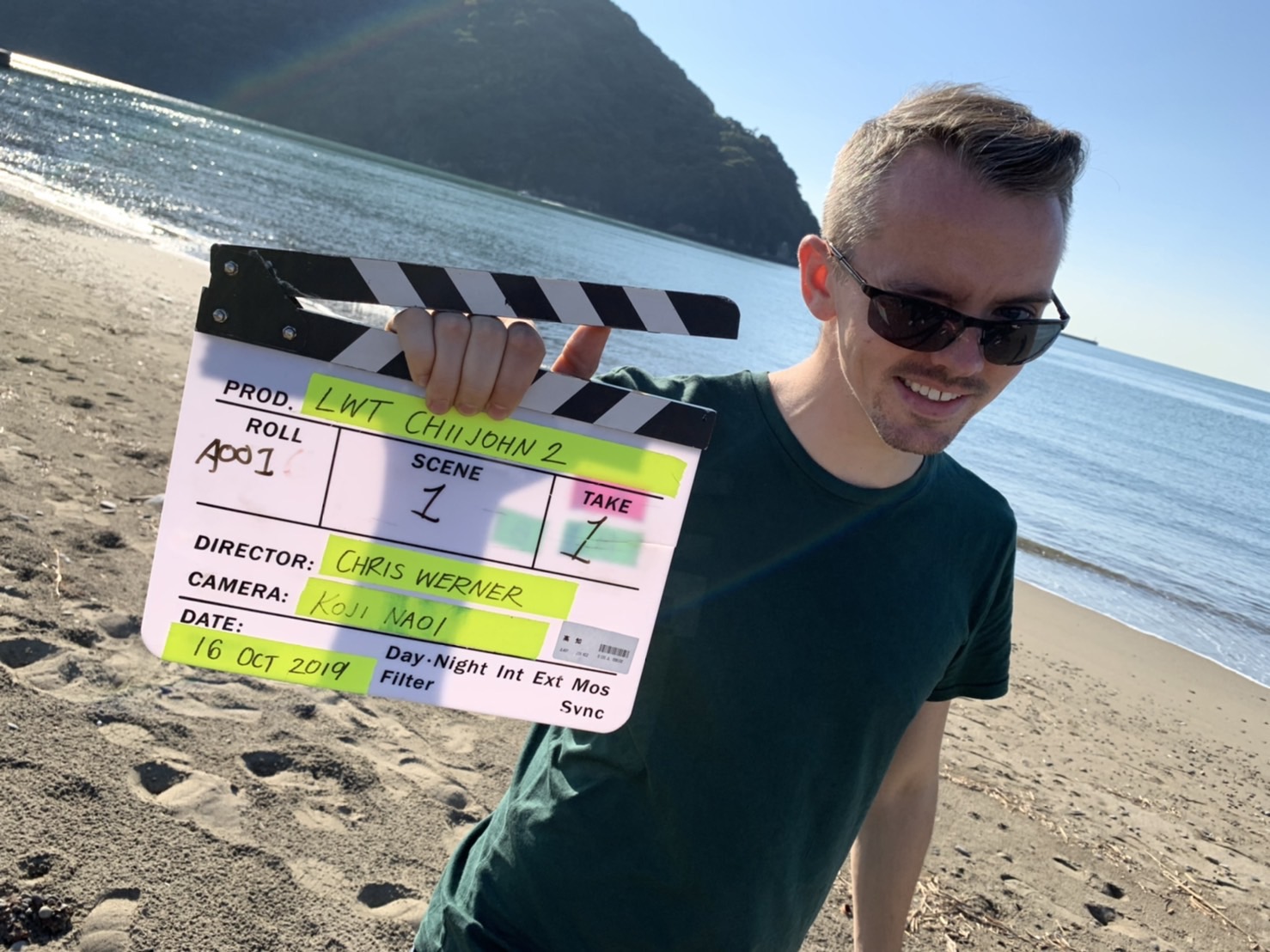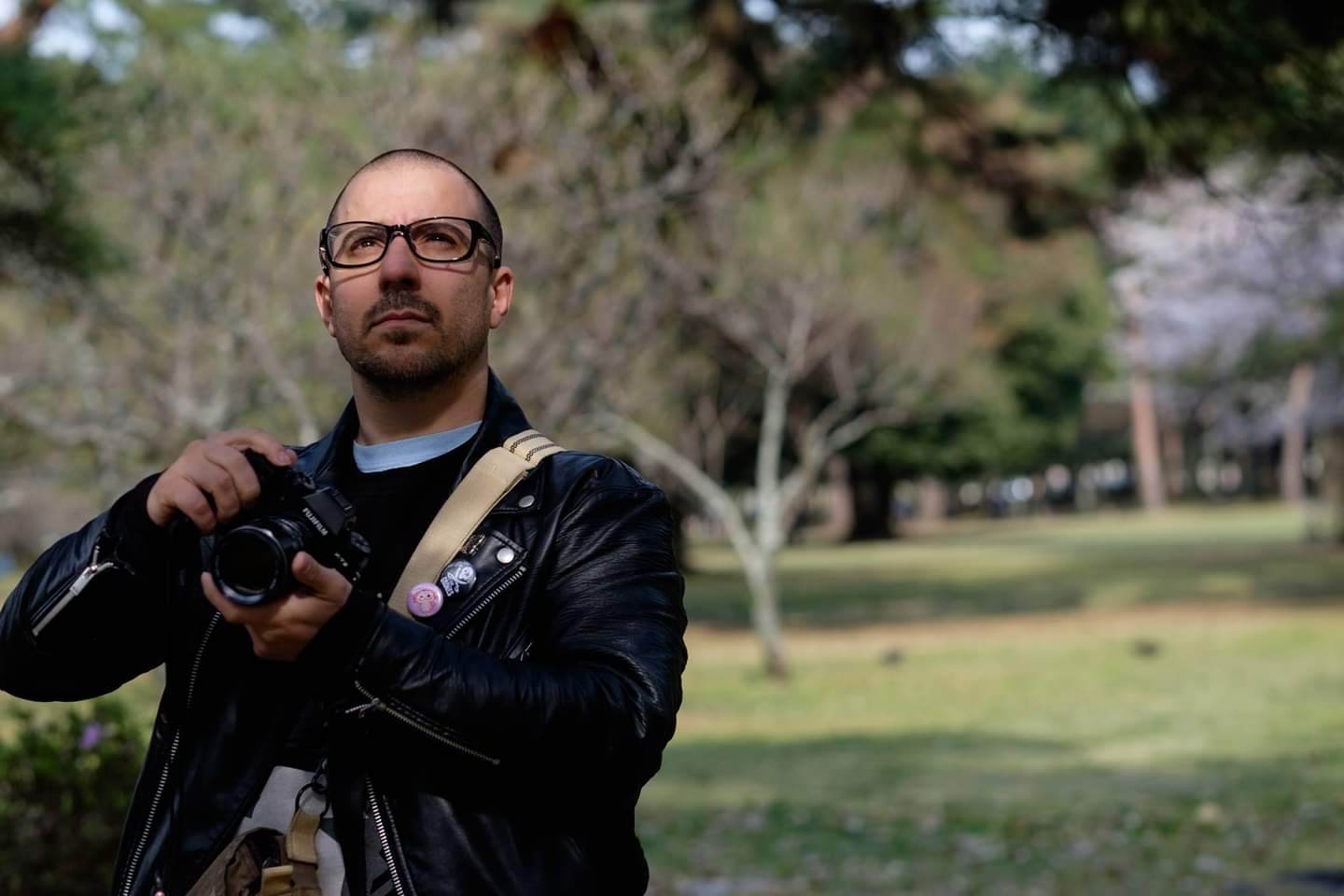What you see on the stage is just the tip of the iceberg.
Drag performance and mainstream theater have many things in common. Both require hours of practice, rehearsals and self-study. Both involve pricey costumes and props. And both turn the effortful into the seemingly effortless for a good show.
They also both require a grand team effort to lift off the ground. Though most drag kings and queens perform their art solo, in actuality, most local drag scenes are like a teeming beehive of connections: experienced performers mentoring younger ones, glamor queens teaching each other makeup secrets, and crafty folks making props and costume pieces on commission, saying nothing of the performers who introduce each other to event bookers.
For better and for worse, this support system is often hidden by the dazzle of the show on stage, but for people living on the fringes of society, networks like this are integral in order to thrive. So, let’s look at a few important members of the village behind the drag in Tokyo: the army of dressmakers, wigmakers, teachers and stylists who’ve supported us along the way.
Makeup Artists
The heart of drag is its face — the fake one we paint on. Many can tell you the charm of both doing drag and consuming it as an audience member is in the transformation, seeing the magic of extreme makeup renders a person completely unrecognizable. When people can’t recognize me out of drag, I take it as a compliment.
While most drag performers should reach the point of painting (or “beating” in drag jargon) their own faces regularly, makeup artists in the community serve a vital role as teachers for newer kings and queens, as well as specialists for commissions.
Some are drag performers themselves, like the dazzling Polaris who does drag makeup as a side business and once painted Meng Delvey of Tokyo BTM for YouTube. Once a successful drag queen, the now semi-retired Pora is a professional makeup artist with clients including visual kei artists such as the band Verj. Veering deeper into special effects and prosthetics, you also have O-ji and Pepe Paladini. The former is the winner of Japan’s prestigious Face Awards in 2019, while the latter works on horror film sets, but both are equally as passionate about drag commissions.
Wig Stylists
A styled wig is often the most overlooked but essential step to creating a well-rounded look. And a generic, massive pageant wig is not the answer to every outfit. Learning about the different wig options, researching how to pin and glue, and finally cleaning and caring for the wig and lace can help a performer take control of their drag.
Of course, wig stylists are indispensable. Drag queen Sera Tonin is one of the most readily available and beloved hair providers in Tokyo today. Having coiffed the heads of famous fellow queens from Drag Race Sverige’s Endigo to Japan’s Durian Lollobrigida, Tonin’s wigs are known for their dramatic shapes, ridges and rhinestone-crusted finishes.
Then there’s Hiroshi Takahashi, the legendary long-time provider of high-end wigs to Tokyo’s drag queens and showgirls. Hiroshi wigs are often huge — yet lightweight — with perfectly sculpted curves and waves.
Dressmakers
Custom dresses are not essential for good drag, but a lovely treat for special events. Most of my own drag comes from consignment stores and online shopping. However, my beloved tuxedo gown —my first and currently only bespoke dress, made in homage to Hector Xtravaganza and Billy Porter — is probably my most valuable garment. It’s made by Amber Saeki, who can sew almost anything.
Sanya Sews is another tailor who, like Saeki, began as a professional cosplayer. She went on to create costumes for official Riot Games Arabia photoshoots and gowns worn by drag queen Endigo on Drag Race Sverige.
Marcel Onodera, the father of Tokyo’s Haus of Strondh, picked up the needle and thread to make costumes for his partner, drag queen Victoria Strondh, and their drag child Vera Strondh. Four years later, Onodera’s hobby has turned into a full-blown side profession, with recent projects including a wedding gown.
A recent graduate of the Tokyo Designer Gakuin, Okini Marciano also makes costumes for her fellow drag queens and showgirls in Tokyo. Marciano’s dresses are heavily influenced by Y2K fashion and ‘gyaru’ aesthetics.
Another recent addition to the Tokyo drag scene, Moon Juun.J, is an experienced and prolific costume maker in the global drag scene. Juun.J’s resume ranges from local queens and Opulence stars to The Boulet Brothers’ Dragula contestant HoSo Terra Toma and Drag Race UK contestants River Medway and Copper Topp.
Supporting drag performers in the Kansai area, Osaka-based Velma Joan Belle is a do-it-yourself queen, from her wig to her dresses. Most recently, Belle created a sensation online when she put out a video about crafting her own gown and hair accessories from recycled Starbucks bags.
Accessories and Props Crafters
Accessories and props make up the small details that audiences might not notice in the moment, but which add depth to any drag performance and complete a look.
At our drag haus, Haus von Schwarz, we have Stefani St. Slut, also known as the “Daiso queen,” who takes it as a matter of pride that she can turn cardboard and twine into elaborate headpieces. Her headpieces and other costume accessories are worn by drag queens, go-go dancers and showgirls all around Tokyo today.
Kosmic Sans is a drag queen famous for her highly detailed drag shows, often bringing in multiple dimensions and media elements into her performances, such as background visualizers, LED light reveals and UV-reactive makeup. For other queens, Kosmic offers custom press-on nail art and graphic design for videos and visualizers — all her specialties.
Choreographers
Not all drag performers consider themselves ‘dancing queens’ in a formal sense, and there are, of course, many genres of dance from which to draw. That said, in the post-Drag Race era, dance (especially ballroom-influenced dance like vogue fem) has become especially popular in drag shows.
Three of the best vogue choreographers and teachers in Tokyo today include Elena Skoullou, Koppi Mizrahi, and Chise Ninja. Both Skoullou and Mizrahi teach weekly classes in Vogue Fem (and occasionally Old Way), while Ninja is one of the top New Way and Vogue Fem dancers in Japan. All three of them offer choreography planning and training at hourly rates.
Another recent star of the dance world is the rapidly rising Vera Strondh, who predominantly dances in hip-hop and jazz styles. In the recent Opulence drag shows Strondh has been co-organizing, her choreography skills have been brought to the forefront with the event’s ensemble dance numbers and ambitious solos.
Videographers and Photographers
Last but certainly not least, these are the artists who help us get our art online and out into the world. Especially for drag performers with ambitious goals within the scene, having a high-quality media kit of professional photos and videos is essential. Moreover, during the pandemic, videographers and music videos such as these artists were very much the lifeblood of the drag community.
Camera operators, Kyle McCloskey, Rodger Sono, and Axel Abysse are all professionals frequently seen circulating throughout the drag world and filming for different events. Alejandro Morales Rama (who publishes photos under the name Kyoka Suigetsu) is a photographer with a passion for covering alternative art, whose work fills many of my drag articles, including this one.
Finally, drag artists Belgium Solanas (also known as Michael Judd) and Duncan Whom are filmmakers and music video directors who have collaborated with much of the alternative drag scene. Solanas specializes in eerie, surreal films, and also makes music videos for both local and overseas bands, including Pop! featuring Angie Hart. Duncan Whom similarly is a filmmaker who traverses the surreal and avant-garde, greatly influenced by David Lynch, Kenneth Anger and classical paintings.
This is, of course, nothing to say of the event organizers, DJs, and stagehands who also help every drag production. It takes a village to raise a drag performer. And there’s no village of which we’d rather be a citizen.
Updated On June 26, 2023

